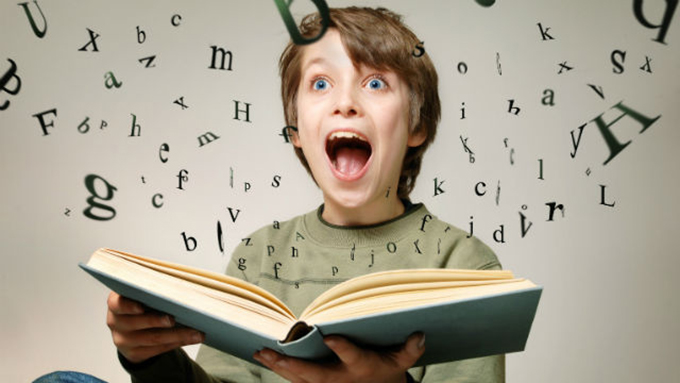 Learning to read is one of the most important skills and strongest predictors of success. Studies show that children who develop strong reading skills are more successful in school, more likely go to university and more likely to achieve a high quality of life. Teaching children how to read is primarily a teacher’s job, but parents play a valuable role.
Learning to read is one of the most important skills and strongest predictors of success. Studies show that children who develop strong reading skills are more successful in school, more likely go to university and more likely to achieve a high quality of life. Teaching children how to read is primarily a teacher’s job, but parents play a valuable role.
Reading for pleasure is a stronger determinant of academic success than social and economic background. It’s critical that children think of reading as a pleasant activity, so they develop the habit of reading for pleasure.
To achieve this, parents can help provide pleasurable early encounters with reading. Unlike teachers, who receive extensive training, parents are typically unprepared to support their children’s reading development. Not surprisingly, some parents find the task daunting and stressful. This is particularly true in the beginning stages when children are just learning to “crack the code” of how written language relates to speaking, and reading is laborious.
Nurturing a child’s shared enjoyment of language is important for laying a groundwork for reading — this starts from birth onwards, with activities that include talking with children and sharing word play or songs and reading to them.
In kindergarten, children continue to expand their vocabulary. They develop an appreciation of rhymes, syllables and individual sounds in words, which lays the foundations for reading. Direct reading instruction and home reading programs typically begin in Grade 1.
Common mistakes to avoid
Common mistakes that create frustration and make reading unpleasant for children include:
• Over-relying on the sound-it-out strategy. When a child stumbles with a word, almost instinctively, adults often say: “Just sound it out!” Indeed, many words can be read this way, however you cannot always match each letter to a sound, for example: the words “where” and “two.” Such words are among the commonly used words that students must learn to recognize by sight through visual memory.
• Covering the pictures. Parents may think that using the pictures is cheating, so may want to cover them. This takes away important information that helps reading.
• Correcting every mistake. When children misread, skip a word, guess or take too long, many parents jump in too quickly and too often to correct them. Over-correcting erodes readers’ confidence and makes the experience painful.
• Always expecting the child to be the one doing the reading. Usually, parents expect the child to read to them. This can be tiring and frustrating for both parties. It is fine to read to the child first. It builds their confidence and makes the experience of reading more pleasurable.
Build a positive experience
Here are some tips on how parents can help their child develop strong reading skills and keep home reading a fun and positive experience.
• Use the book’s pictures and illustrations. It’s not cheating to look at the pictures first and talk about what you see before trying to read the words. The pictures give clues to the words.
• Read to your child often. Read to your children for as much time as they are interested. To expand their knowledge of the world and their vocabulary, read books that are at a higher level than they can read. When they see you reading, they will want to read too.
• To read independently and with understanding children must know about 95 per cent of the words. Help your child choose “just right” books. Easy books are good! If the book is too hard, your child may get frustrated and begin to dislike reading. If your child chooses a book that is too hard, read it to them or with them, so they can still enjoy the story.
• Warm up the book. This means before reading a book with your child, consider the book together: read aloud the title, talk about the topic, look at the pictures and talk about what you see, predict what might happen or explain the meaning of difficult words.
• Include non-fiction or science/fact books. Warm up these books using the K-W-L strategy (know, wonder and learn). For example, if your child chooses a book about owls, ask them what they already know about owls, and share what you know too. Then ask what they wonder or want to know about owls, and share something you wonder about too. After you have read, talk about some of the new things you have learned about owls.

If your child chooses a book about owls, part of ‘warming up’ the book before you read means talking about what your child already knows about owls. (Shutterstock)
• Handle reading mistakes in a positive way. Not every mistake needs to be corrected. If the mistake does not change the meaning of the text, let it go. If your child says “house” for home, even “bunny” for rabbit, let it go, for the sake of fluency, comprehension and enjoyment. If what they are reading does not make sense, or the meaning has changed, you need to intervene, but first pause and wait a few seconds to give them time to self correct. If they do, praise them. If they carry on reading, prompt them.
• Use effective prompts. For example, these are good questions to ask: Does that make sense? Does that sound right? Does that word look right? Or, if the sentence reads: “The boy rode the horse,” but your child reads, “The boy rode the house,” pause to see if your child self-corrects. If they don’t, ask: “Does that make sense? He rode the house? Look at each letter in the word.” Or, supposing your child reads, “The boy roped the horse.” Pause first, then point at “rode” say: “Let’s look at this word carefully. Does this word look like roped?”
• Bring attention to words within words. Long words are challenging for novice readers. Suggest they look for small words within the big words. Break down the word into smaller chunks (words) they might know: for instance, “play” and “ground” in playground. Go back to those words later and talk about the meaning of the two chunks and how they together make another word. This builds vocabulary knowledge and will serve them well in later grades when encountering complex academic words that typically have several chunks of meaning (for example, biodiversity, electromagnetic, internationalization).
Most kindergarteners and Grade 1 children are excited about learning to read, but by Grade 3 many have become reluctant readers and begin to fall behind. Our hope is that these tips help to reverse these trends and all children become lifelong readers, because reading is a path to success and wisdom.
Author Bio: Gloria Ramirez is Associate Professor of Education at Thompson Rivers University
